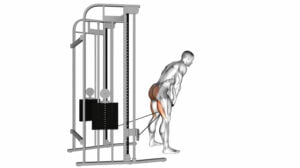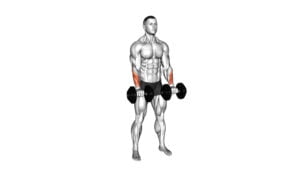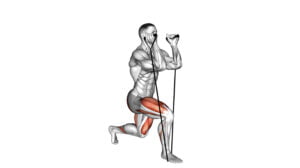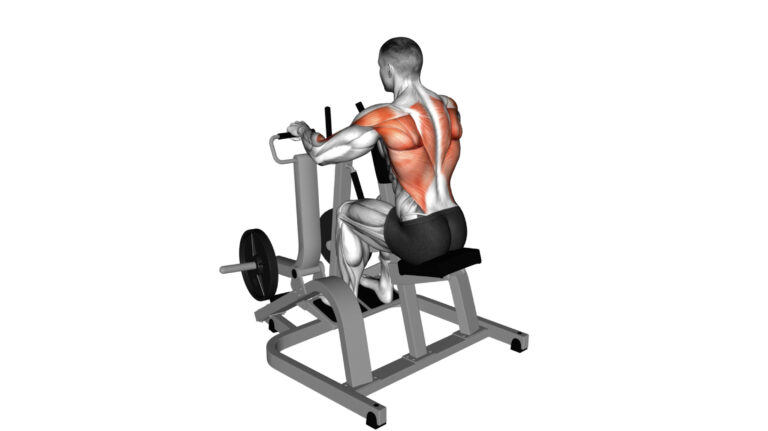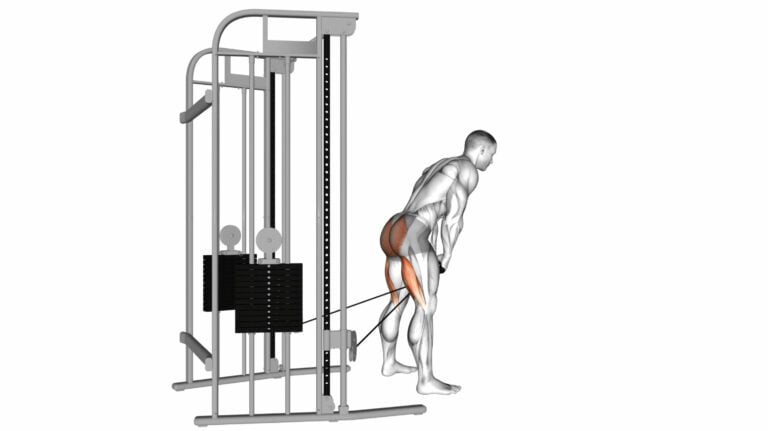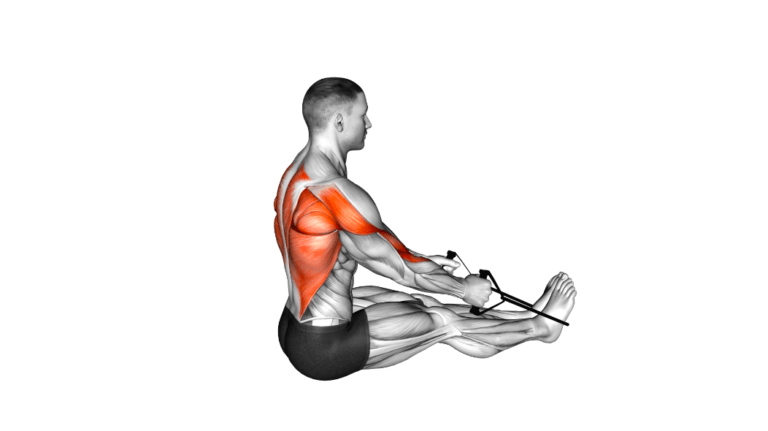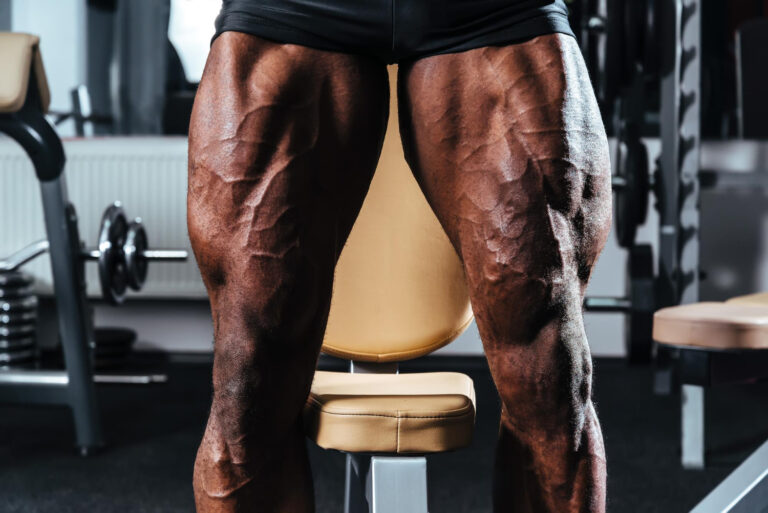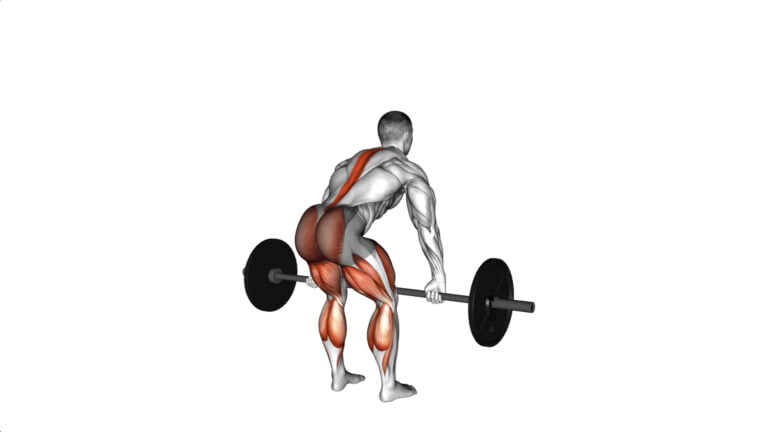10 Lateral Deltoid Best Exercises You Need to Try Today!

Building robust and sculpted shoulders isn’t just a matter of aesthetics; it’s about functional strength that bolsters every upper-body movement. With over a decade of experience in personal training and strength coaching, I’ve seen countless gym-goers neglect their lateral deltoids, often overshadowed by their anterior partners.
However, strong side delts are not just critical for a symmetrical physique—they play a pivotal role in lifting mechanics and shoulder stability.
Targeting the lateral deltoid—the muscle that gives your shoulders their rounded shape—is key to unlocking greater overall shoulder health and performance. The 10 lateral deltoid best exercises listed here aren’t mere suggestions; they’re battle-tested techniques designed to sculpt and fortify this vital part of the shoulder complex.

Ready to elevate your shoulder game? Read on to discover how these moves will transform your upper body training routine.
Key Takeaways
- Strengthening the lateral deltoids is important for shoulder health and stability, which can improve posture and reduce injury risk.
- The top 10 exercises for building strong lateral deltoids include variations of presses, raises, and rows using bands, dumbbells, barbells, cable machines, and leverage equipment.
- To maximize muscle growth in the side delts, it’s recommended to gradually increase weight or reps over time while maintaining proper form.
- Stretching and myofascial release techniques are crucial for maintaining flexibility in the side deltoids and supporting recovery after workouts.
- Incorporating these lateral deltoid exercises into a routine can lead to significant improvements in upper body strength and contribute to a more balanced physique.
The Importance of Strengthening the Lateral Deltoids
The lateral deltoids play a crucial role in shoulder stability and overall upper body strength. Strengthening these muscles can help improve posture, enhance shoulder joint function, and reduce the risk of injury during various movements or activities.
Developing strong lateral deltoids also contributes to a more balanced and sculpted upper body aesthetic.
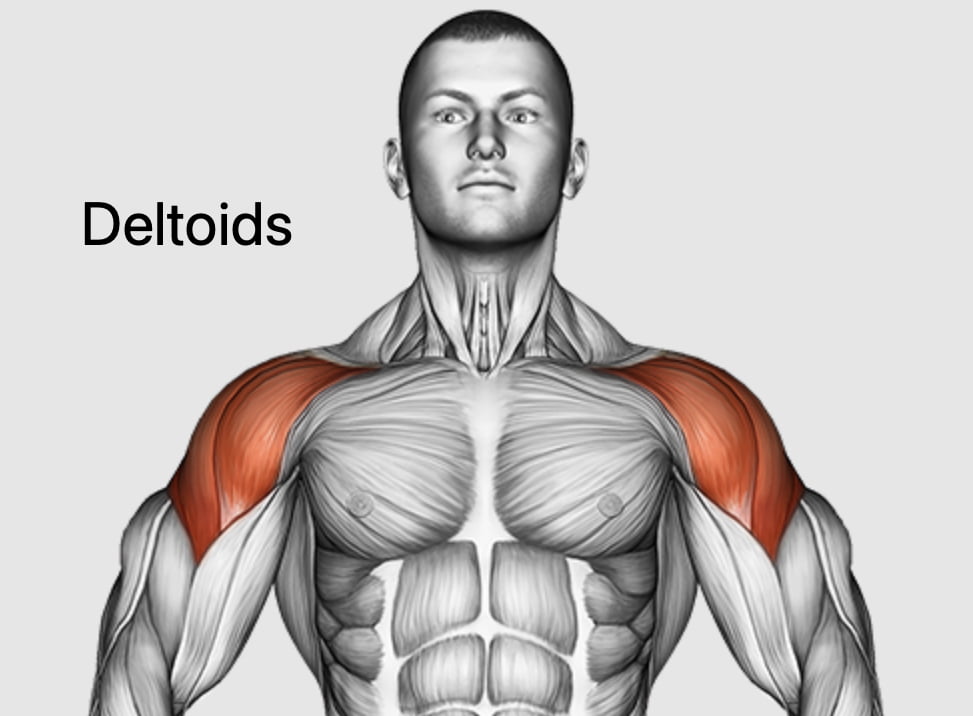
What are the Side Delts?
Side delts, or lateral deltoids, are the muscles that give your shoulders a wide, strong appearance. They sit on the outer edge of your shoulders and spring into action anytime you raise your arms to the side.
These muscles aren’t just about looks; they’re crucial for shoulder stability and function during daily activities as well as intense workouts.
Developing these particular deltoid muscles can also help prevent muscle imbalances that could lead to injury. Next up, let’s explore how powerful side delts contribute to an impressive physique and overall upper body strength.
Benefits of strong side delts
Having strong side deltoids isn’t just about looking good – it’s a key factor in maintaining healthy shoulder function. These muscles contribute significantly to your ability to move your arms across your body and lift them out to the side, which are movements you do countless times throughout the day.
Strong lateral delts support the shoulder joint, enhancing stability and reducing the risk of injuries that could sideline you from sports or even simple daily tasks.
Developing robust side deltoids can also transform your posture by providing better support for your shoulders, preventing them from rounding forward. This not only helps you stand taller but also sets the stage for improved performance in any activity involving upper-body strength like throwing a ball or pushing a heavy door open.
Moreover, when these muscles are well-conditioned through targeted exercises such as upright rows and lateral raises, they help reduce chances of shoulder impingement – keeping pain at bay and allowing for a fuller range of motion so that every movement is smoother and more powerful.
The Top 10 Lateral Deltoid Best Exercises
When it comes to targeting the lateral deltoids, incorporating exercises like the Band Seated Shoulder Press and Dumbbell Incline Powell Raise can help in building strength and definition.
These exercises are essential for a well-rounded shoulder workout routine.
1. Band Seated Shoulder Press
Grab a resistance band and take a seat to start strengthening your shoulder muscles with the Band Seated Shoulder Press. This exercise zeros in on your lateral deltoids, while also engaging your front and rear delts for a comprehensive shoulder workout.
Using the resistance band offers versatility and convenience, making it perfect for home gyms or when traveling.
Sit firmly on a bench, plant your feet on the ground, and press that band overhead with conviction; you’re not just building muscle endurance but enhancing overall shoulder stability too.
It’s an ideal move for people who need to be mindful of their shoulder mobility as it allows controlled movements without compromising form. And after working those deltoids, get ready to raise the stakes with our next power move: the Band Lateral Raise.
2. Band Lateral Raise
Band lateral raises are an effective exercise for targeting the lateral deltoids. By using a resistance band, individuals can conveniently engage in this exercise at home or while traveling.
This isolation exercise works to enhance shoulder stability and function while developing strength in the shoulders. Plus, different variations of band lateral raises allow for targeting the muscles from various angles, contributing to improved overall shoulder development.
Incorporating band lateral raises into a shoulder workout routine can notably strengthen the shoulders and contribute to enhanced aesthetics. This exercises specifically targets the lateral deltoid muscles, aiding in building strength and definition across the shoulders—a crucial component of any comprehensive upper body training regimen.
3. Dumbbell Bench Seated Press
The Dumbbell Bench Seated Press is a top exercise for targeting the lateral deltoids. To perform this exercise, sit on a bench with back support and press the dumbbells overhead while keeping the elbows slightly bent.
This movement effectively strengthens and develops the lateral deltoid muscles, crucial for shoulder stability and overall strength.
This exercise can be adapted with different rep ranges and weights to challenge the lateral deltoids, thus promoting muscle growth. Incorporating Dumbbell Bench Seated Press into your workout routine can significantly enhance shoulder strength and stability.
4. Dumbbell Incline Powell Raise
After targeting the lateral deltoids with the Dumbbell Bench Seated Press, transition to the Dumbbell Incline Powell Raise for a well-rounded shoulder workout. This exercise isolates the lateral deltoids effectively and is particularly beneficial for building strength and size in this area.
Using dumbbells and an incline bench, maintain proper form and control throughout to maximize its benefits when incorporated with other exercises.
Engage both your lateral deltoids by including the Dumbbell Incline Powell Raise in your shoulder workout routine.
5. Dumbbell One Arm Lateral Raise
The Dumbbell One Arm Lateral Raise specifically targets the lateral deltoid muscle, playing a vital role in strengthening and defining the shoulders. Executed with proper form, this exercise involves holding a dumbbell in one hand and raising the arm to shoulder height.
Not only does it boost shoulder stability and overall strength, but it also aids in preventing shoulder injuries and enhancing shoulder function.
Performing the Dumbbell One Arm Lateral Raise is a great addition to any shoulder workout regimen as it effectively targets the lateral deltoid from various angles, contributing to well-rounded shoulder development while minimizing injury risk.
6. Landmine Kneeling Squeeze Press
The Landmine Kneeling Squeeze Press engages the lateral deltoids while also targeting shoulder stability and strength. This exercise involves a squeezing motion, activating the chest and triceps in addition to the lateral deltoids, providing a well-rounded upper body workout.
By modifying grip variations, different areas of the shoulder muscles can be targeted effectively. Its versatility makes it suitable for individuals at varying fitness levels, ensuring inclusivity in shoulder development routines.
Incorporating different grip variations allows for a more comprehensive engagement of the lateral deltoid muscles during this versatile movement. The Landmine Kneeling Squeeze Press is an adaptable exercise that promotes overall upper body strength and stability, making it an effective choice for individuals seeking balanced shoulder development.
7. Barbell Wide Grip Upright Row
The Barbell Wide Grip Upright Row targets the lateral deltoids by involving a wider than shoulder-width grip and lifting the barbell to shoulder height. This exercise can be performed with an EZ bar or a straight barbell, making it versatile for different training preferences.
It’s crucial to maintain proper form and avoid excessive weight to prevent shoulder strain or injury while reaping the benefits of building strength and size in the lateral deltoid muscles.
When combined with other lateral deltoid exercises like Band Lateral Raise or Dumbbell One Arm Lateral Raise, this row can contribute to a well-rounded shoulder workout routine.
8. Cable Shoulder Press
Transitioning from the previous exercise, the Barbell Wide Grip Upright Row, the Cable Shoulder Press is another effective way to target the lateral deltoids. Using a cable machine with adjustable weight resistance, this exercise engages not only the lateral deltoids but also activates the front and rear deltoid muscles.
Whether performed standing or seated with various grip positions, proper form and controlled movements are essential for preventing injury and maximizing effectiveness.
This compound movement promotes well-rounded shoulder development when combined with other lateral deltoid exercises. It’s an efficient way to build strength and stability in your shoulders while targeting multiple muscle groups simultaneously.
9. Cable Upright Row
The Cable Upright Row is a fantastic exercise for targeting the lateral deltoids, which are the muscles on the sides of your shoulders. By using a cable machine to perform an upright row motion, you can effectively isolate and strengthen these muscles.
This exercise offers the benefit of maintaining constant tension on the lateral deltoids throughout the range of motion, promoting shoulder stability and mobility. Incorporating Cable Upright Rows into your shoulder workout routine can contribute to achieving a well-balanced and sculpted appearance in your deltoid muscles.
This targeted exercise helps achieve stronger shoulder girdle stability while focusing on lateral deltoid development. Constant attention during execution ensures proper muscle engagement for better results in overall shoulder strength and aesthetics.
10. Leverage Machine Lateral Raise
The Leverage Machine Lateral Raise earns its place as one of the top 10 best exercises for the lateral deltoid. This exercise offers targeted muscle engagement, aiding in developing strength and definition in this area.
Its adjustable weight and resistance make it suitable for individuals at any fitness level, while its isolated movement provides a controlled and effective workout specifically for the lateral deltoids.
Incorporating the Leverage Machine Lateral Raise into your shoulder routine can significantly enhance overall shoulder strength and development. This exercise allows users to achieve targeted results with proper form and technique, ensuring safe performance while preventing injury.

Tips for Training and Targeting the Side Deltoids
To maximize the development of your lateral deltoids, prioritize side delt exercises, focus on adding weight or reps to every exercise, and maintain proper form and technique throughout each movement.
For more detailed tips on training and targeting the side deltoids, read on in this article.
Prioritizing side delt exercises
Prioritize side delt exercises to enhance shoulder strength and stability. By focusing on targeted movements, you can develop the lateral deltoid muscles effectively. Incorporating exercises like band seated shoulder press, dumbbell one-arm lateral raise, and cable upright row can help build muscle mass and strength in your side delts over time.
Gradually increasing the resistance and incorporating proper form are crucial for progress.
Adding weight or reps to every exercise gradually is key to promoting muscle growth in the lateral deltoids. This progressive overload approach helps improve shoulder aesthetics while reducing the risk of injury associated with improper training techniques.

Adding weight or reps to every exercise
Progressively increase the weight or reps for every exercise to effectively target and strengthen the side deltoids. Gradually adding resistance is key in building muscle and strength in this area, ensuring that proper form is maintained to prevent injury.
Listen to your body cues and adjust weight or reps as needed, steadily working towards achieving stronger side deltoid muscles while avoiding overexertion.
By gradually increasing the weight or reps of each exercise, you can progress safely towards enhancing the strength and definition of your lateral deltoids. Maintaining proper form during these incremental increases will help prevent strain or injury, ensuring consistent progress without setbacks.
Proper form and technique
Maintain proper posture by keeping your back straight and engaging the core during lateral deltoid exercises. This ensures targeted activation of the side delts while minimizing strain on other muscles.
Avoid using momentum or swinging weights, instead focus on controlled movements to prevent injury and effectively engage the lateral deltoids throughout each exercise.
Keep shoulders down and back when performing Dumbbell Incline Powell Raises to properly activate the side delts without excessively involving surrounding muscle groups. Using light to moderate resistance with a focus on controlled movements, such as a slight pause at the top, enhances muscle engagement for exercises like Band Lateral Raises.

Recommended Sets And Reps
When targeting the side deltoids, it’s essential to adhere to recommended sets and reps to ensure proper muscle engagement and growth. Following a structured approach can help maximize the effectiveness of your workout. Here is a breakdown in an HTML table format, outlining the suggested sets and reps for the top lateral deltoid exercises:
| Exercise | Sets | Reps | Rest Periods |
|---|---|---|---|
| Band Seated Shoulder Press | 3-4 | 8-12 | 60-90 seconds |
| Band Lateral Raise | 3-4 | 8-12 | 60-90 seconds |
| Dumbbell Bench Seated Press | 3-4 | 8-12 | 60-90 seconds |
| Dumbbell Incline Powell Raise | 3-4 | 8-12 | 60-90 seconds |
| Dumbbell One Arm Lateral Raise | 3-4 | 8-12 | 60-90 seconds |
| Landmine Kneeling Squeeze Press | 3-4 | 8-12 | 60-90 seconds |
| Barbell Wide Grip Upright Row | 3-4 | 8-12 | 60-90 seconds |
| Cable Shoulder Press | 3-4 | 8-12 | 60-90 seconds |
| Cable Upright Row | 3-4 | 8-12 | 60-90 seconds |
| Leverage Machine Lateral Raise | 3-4 | 8-12 | 60-90 seconds |
Opt for shorter rest periods between sets, ideally around 60 to 90 seconds, to keep the intensity high. This strategy helps maintain focus and ensures the muscles stay engaged throughout your workout. Regularly incorporating these exercises into your routine can lead to stronger, well-defined lateral deltoids.

Sample side delt programming
To effectively target the side deltoids, incorporate a variety of exercises into your workout program. Include compound movements like band seated shoulder press and barbell wide grip upright row, as well as isolation exercises such as dumbbell one arm lateral raise and cable shoulder press.
Varying equipment like bands, dumbbells, barbells, and cables can help challenge the side deltoids in different ways for optimal development.
Proper form and technique are crucial for maximizing exercise effectiveness and minimizing the risk of injury. Utilize progressive overload by adding weight or reps to each exercise to continually challenge your side deltoids.
Stretching and Myofascial Release Techniques for the Side Deltoids.
Stretching and myofascial release techniques are essential for maintaining the health and flexibility of the side deltoids. These techniques help to improve the range of motion in the shoulder joints and reduce the risk of injury.
- Cross-body arm stretch: Begin by extending one arm across your body, then use your other arm to gently pull it closer to your chest. Hold this stretch for 15-30 seconds before switching to the other arm.
- Overhead triceps stretch: Extend one arm overhead and bend your elbow so your hand reaches towards the opposite shoulder blade. Use your other hand to gently push down on the elbow. Hold this stretch for 15-30 seconds before switching to the other arm.
- Behind-the-back shoulder stretch: Interlace your fingers behind your back, then slowly lift your arms upward until you feel a gentle stretch in your shoulders. Hold this position for 15-30 seconds while focusing on deep breathing.
Conclusion

In conclusion, mastering the 10 lateral deltoid best exercises will result in strong and sculpted shoulder muscles. These exercises are both practical and efficient, easily implemented into any workout routine for impressive results.
By targeting the lateral deltoids, you can significantly improve your overall shoulder strength and stability. Explore additional resources to further enhance your knowledge on maximizing lateral deltoid development.
Embrace these effective exercise techniques to transform and strengthen your upper body today!
FAQs
1. What are the lateral deltoid muscles and why should I exercise them?
The lateral or middle delts are crucial muscles in your upper arms that help with shoulder abduction movements, making your shoulders appear broader and more muscular.
2. Can you name some effective exercises for my middle deltoids?
Absolutely! Some top exercises include the military press, Arnold press, and side laterals with free weights, all designed to target and strengthen those middle delts.
3. Are there specific exercises for my posterior deltoid?
Indeed there are! Exercises like rear delt rows and reverse flyes focus specifically on your posterior deltoids, which play a key role in achieving balanced muscle development across your shoulders.
4. How do compound exercises benefit my anterior deltoids?
Compound exercises such as overhead press and push-ups engage not only your front delts but also synergize multiple muscle groups like triceps and chest, offering a comprehensive upper-body workout.
5. Is it safe to exercise if I have shoulder pain or rotator cuff injuries?
If you’re experiencing shoulder pain or suspect rotator cuff issues, consult with a healthcare professional first; they can recommend safe modifications or alternative moves to avoid aggravating any injury.
6. How often should I work out my medial deltoid for best results?
To effectively build strength in your medial deltoid without overtraining, aim to incorporate targeted exercises into your routine 2-3 times a week allowing rest days between for muscle recovery.

Author
Years ago, the spark of my life’s passion ignited in my mind the moment I stepped into the local gym for the first time. The inaugural bead of perspiration, the initial endeavor, the very first surge of endorphins, and a sense of pride that washed over me post-workout marked the beginning of my deep-seated interest in strength sports, fitness, and sports nutrition. This very curiosity blossomed rapidly into a profound fascination, propelling me to earn a Master’s degree in Physical Education from the Academy of Physical Education in Krakow, followed by a Sports Manager diploma from the Jagiellonian University. My journey of growth led me to gain more specialized qualifications, such as being a certified personal trainer with a focus on sports dietetics, a lifeguard, and an instructor for wellness and corrective gymnastics. Theoretical knowledge paired seamlessly with practical experience, reinforcing my belief that the transformation of individuals under my guidance was also a reflection of my personal growth. This belief holds true even today. Each day, I strive to push the boundaries and explore new realms. These realms gently elevate me to greater heights. The unique combination of passion for my field and the continuous quest for growth fuels my drive to break new ground.





